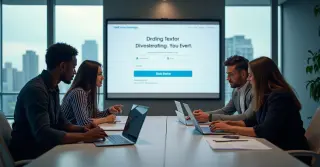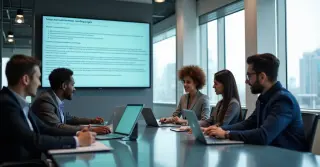Text Landing Page

Landing Page Text for Conversion Optimization: A Guide to Crafting Impactful Copy
A landing page copy is one of the most crucial elements of an online marketing strategy. It serves as a focused tool designed to turn traffic into leads into leads. Crafting a high-converting text landing page requires more than just compelling words. It involves strategically placing keywords and structuring your content to appeal to both the user's needs and search engine algorithms. The goal is clear: maximize engagement.
When creating content for a conversion-focused page, it's essential to first understand the visitor persona. This will guide the tone, messaging, and structure of the page. The language should address their pain points, offering solutions that provide real value. By tailoring the copy to the specific target audience you're trying to reach, you can increase the likelihood of conversion. Whether you’re focusing on an informational page, customized messaging plays a key role in developing a connection with the user.
Moreover, it’s important to craft a page title that captures attention instantly. The headline is the first thing a visitor sees and should immediately address the user’s needs in a concise manner. Using persuasive language can trigger curiosity or urgency. For example, words like "exclusive," "limited-time," or "proven" suggest urgency, encouraging users to stay on the page and learn more. The headline should also match the user’s intent that led the visitor to the page. This creates relevance, which is a factor in user trust and search engine ranking.
Once you have an engaging headline, the next step is to create persuasive body copy. This is where you detail the benefits and features of your offering. A key principle in copywriting for landing pages is focusing on advantages over product attributes. While features describe what the product or service is, benefits explain what the user will gain from using it. Users care less about the technical details of a product and more about how it will improve their lives. For instance, instead of simply saying, "Our software includes an automatic backup feature," say, "Never worry about losing your files again with our automatic backup feature that keeps your data secure at all times."
Additionally, the body copy should include testimonials. People are more likely to take action when they see that others have had positive experiences with the product or service. Including user feedback not only builds trust but also provides validation. A well-placed testimonial or review can make the difference between a visitor clicking the "Buy Now" button or leaving the page. These social signals serve as powerful psychological triggers that validate the visitor's decision-making process.
Along with trust elements, another essential component of a high-converting landing page is the call to action. The CTA should be clear, specific, and hard to miss. Use action verbs that encourage instant engagement, such as “Get Started Now,” “Get Free Access,” or “Claim Your Offer Today.” Make sure the CTA stands out, either through vibrant tones or by placing it in a prominent spot. It should also be placed in various positions on the page, ensuring that users always know how to proceed no matter where they are in the copy.
Another often-overlooked but critical factor is page speed. A slow-loading landing page can turn off potential customers before they even read a word of the copy. Google has made it clear that page speed is a ranking factor, and slow pages can hurt your search engine rankings. Optimizing images, minimizing scripts, and using quick web hosting services are all essential steps in improving loading times. Rapid-loading pages create a easy experience that encourages visitors to stay longer and spend more time with your content.
When designing a landing page, it’s also important to ensure that the page is mobile-responsive. As mobile traffic continues to grow, users expect websites to adapt to their screen sizes. A mobile-friendly design means that your landing page should be fluid to provide a smooth experience, with clickable elements that are intuitive to tap on a smartphone or tablet. This improves user engagement, leading to better engagement.
Moreover, split testing should be part of your ongoing landing page optimization strategy. By continuously testing different taglines, CTAs, images, and body copy, you can gather data on what works best for your audience. A/B testing helps eliminate guesswork and ensures that your landing page evolves to meet user preferences and behaviors. Even minor changes, like adjusting the color of a CTA button or rephrasing a headline, can result in significant improvements in conversion rates.
Lastly, the copy on your landing page should adhere to SEO best practices. While conversion is the ultimate goal, attracting traffic is the first step. Therefore, targeted keyword placement is vital for ranking on search engines. Integrate keywords naturally throughout the copy, ensuring they align with both the user’s search intent and the content’s purpose. Additionally, ensure that headings are all optimized for relevant keywords. This will not only improve the page's visibility in search engine results but also contribute to a more cohesive user experience.
In summary, creating a successful text landing page goes beyond just writing compelling copy. It’s about knowing your customers, crafting captivating headlines, providing easily understood benefits, building trust through reviews, and optimizing the user experience. By focusing on these important factors, you can create a page that not only attracts visitors but also converts them into loyal customers. Keep in mind that an effective landing page is always evolving, so regular updates and optimization are essential to maintaining high conversion rates.










